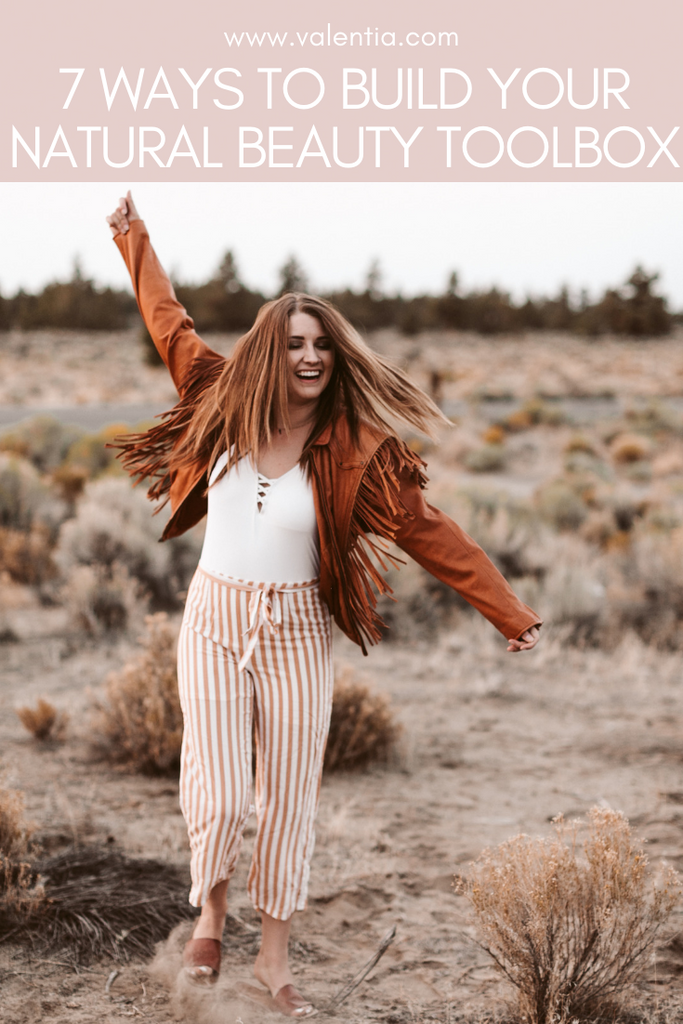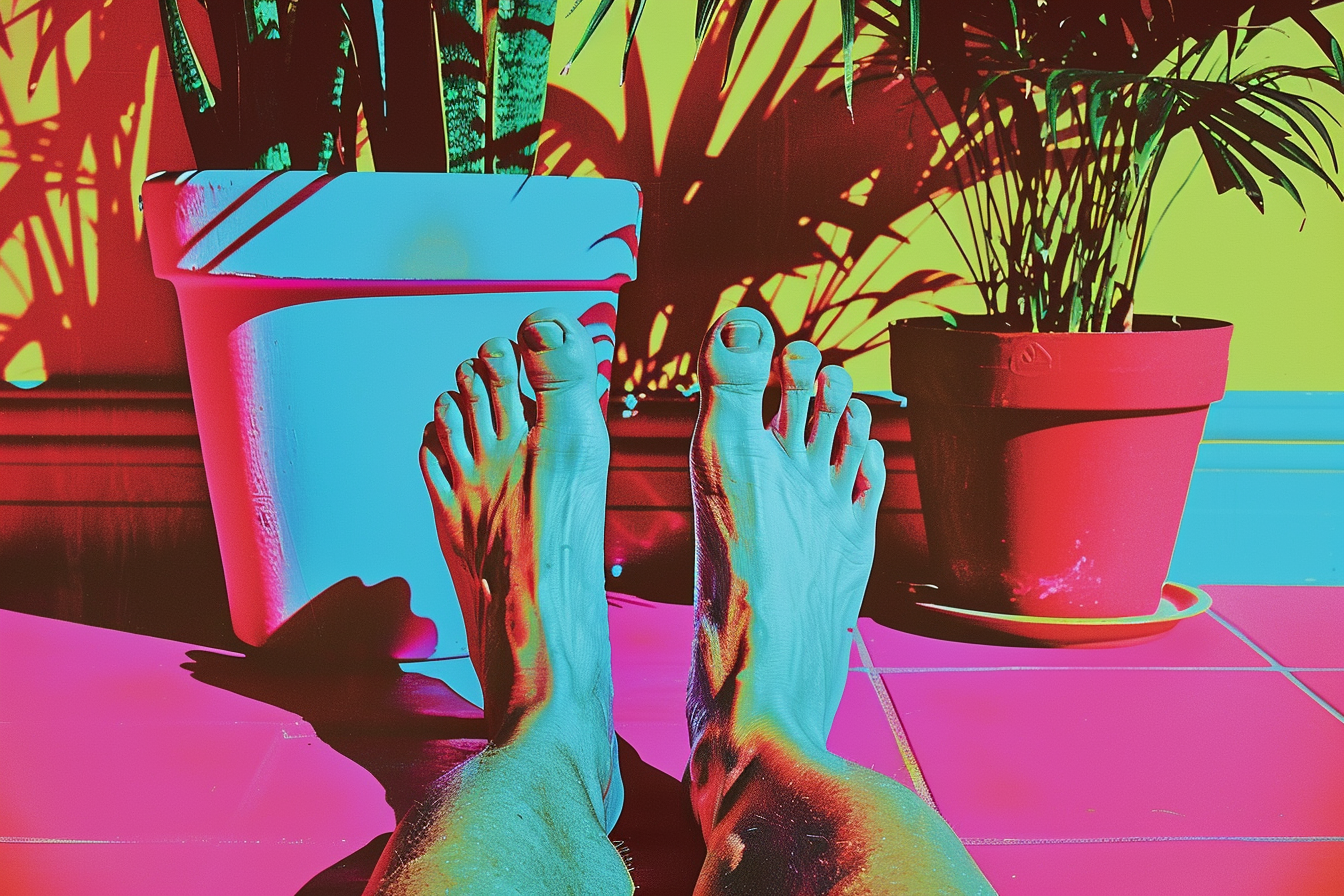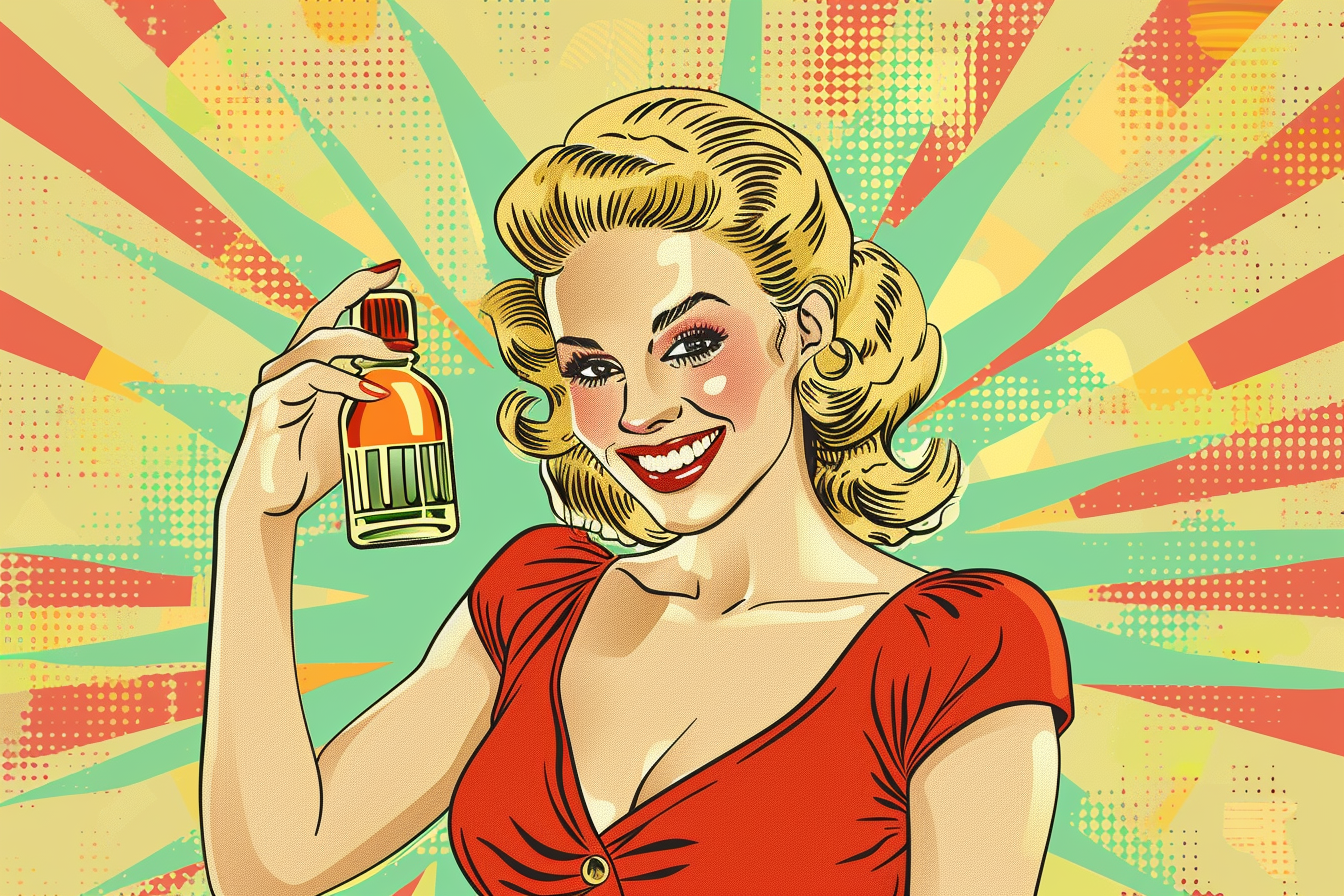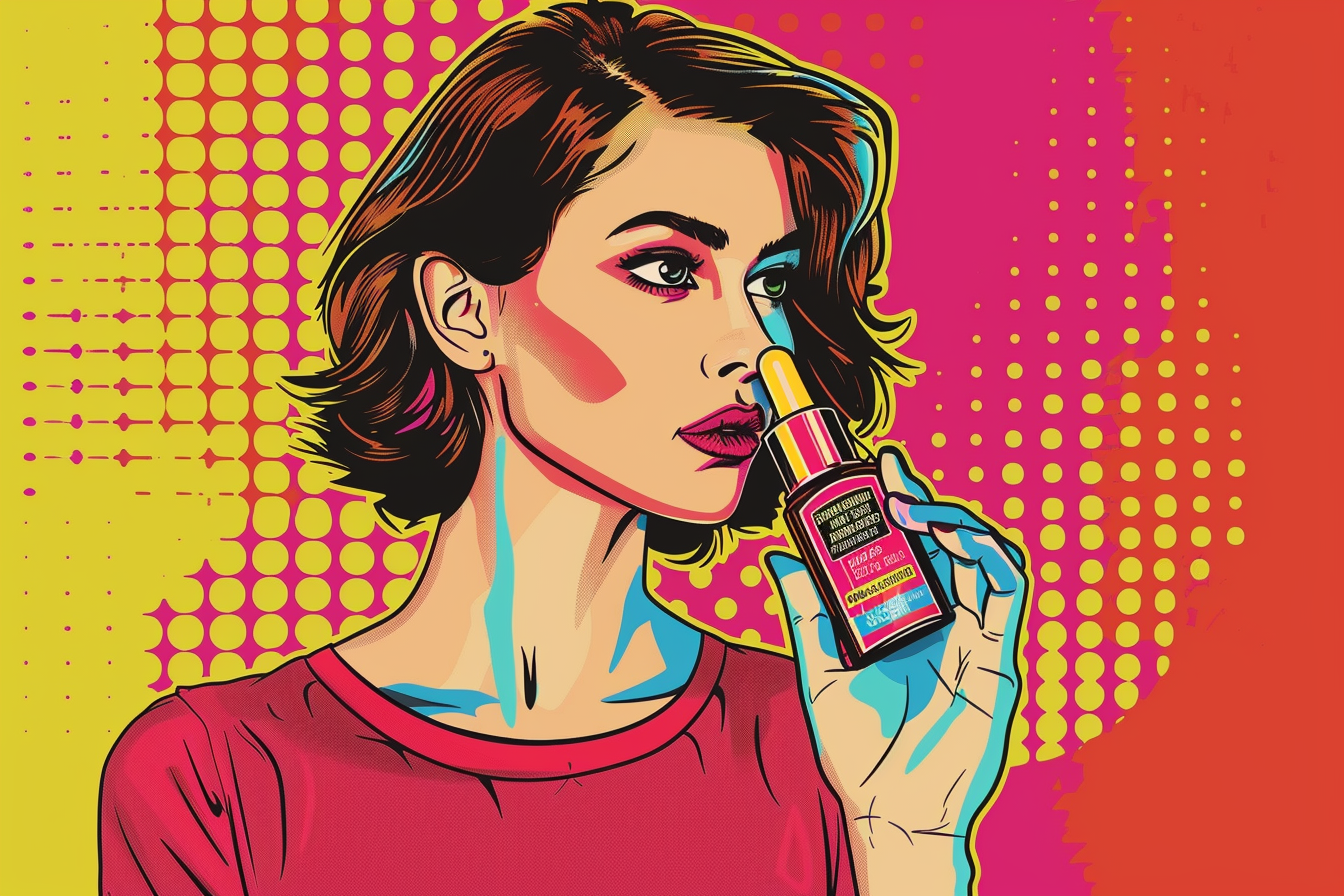
In an age when holistic wellness is becoming a prevailing philosophy, natural beauty is stepping into the limelight as we come to understand that we’re not only what we put into our bodies by eating—we’re what we put on our bodies as well.
Consider this: Because the skin is the body’s largest organ and a portion of each beauty product you apply gets absorbed into the bloodstream, your skincare essentials actually become part of your overall body chemistry over time.
And, now that we have access to plentiful information showing just what’s hiding in our typical skincare and hygiene products, we see that so many of these synthetic additives and ingredients can be detrimental to the good bacteria within the human microbiome (or the collection of bacteria that reside in and on the body). When the microbiome becomes imbalanced, it tends to show up on your skin.
Thanks to research over the last decade on just how these ingredients affect the body, we’re now seeing a growing shift away from artificial ingredients and sterilizing products and toward earth-friendly alternatives that support your natural state of well-being—including your complexion.
Why Worry About Beauty Ingredients?
Don’t all beauty products have to be safe? Sadly, the answer is no. Although the majority of people believe that all the ingredients in skincare products have to be declared safe by the government, the FDA actually has no authority to approve cosmetic ingredients.1 It turns out the beauty industry still operates according to the 1938 Food, Drug, and Cosmetic Act, which trusts the honor of product manufacturers and only requires them to declare that they’ve proven their own ingredients to be safe.2,3 In other words, no outside checks are required.
That system may have flown under the radar for quite a while, but consumer awareness is beginning to turn the tides once and for all (thanks to online wellness platforms delivering research and insight into what’s working and what’s not).
While the law clearly hasn’t caught up with evolving attitudes, and there’s no designated government agency to enforce the safety of beauty products, a recent study found that close to 60% of women read product labels before making a purchase—and close to 79% of women age 35-54 participating in the study believed that using all-natural skincare products was important.4
Fortunately, there is some hope on the horizon with the proposed Personal Care Product Safety Act, which would highlight specific things to avoid when shopping for skincare essentials. The proposal aims to investigate five suspect ingredients annually, and force manufacturers to remove them from their products if they are found to be harmful.4 For the time being, however, safe, natural beauty is a personal responsibility. It’s up to each of us to become a wise and educated consumer—as well as to reexamine what it means to be beautiful in the first place.

Building Your Natural Beauty Toolbox
Extending holistic wellness to your skincare routine often means a major purge of all those questionable beauty products that may be lining your shelves—and then coming up with ideas for healthy, natural replacements.
If that sounds like a daunting task, you’re in for a pleasant surprise. Many of the most effective natural beauty botanicals are extremely versatile, replacing multiple products and streamlining your overall routine.
Begin by reading labels carefully. You’ll want to toss anything containing dangerous synthetic additives. Some of the most well documented as troublesome include parabens, PEG, sulfates, artificial preservatives, artificial colors, phthalates, formaldehyde, toluene, triethanolamine (TEA), propylene glycol, retinyl, tetrasodium EDTA, PABA, oxybenzone, benzophenone, methoxycinnamate, homosalate, siloxanes, and cyclomethicone.5,6,7,8,9,10
Unfortunately, this list doesn’t begin to cover all the harmful chemicals that turn up in beauty products (check out our Blacklist for even more ingredients to avoid). Basically, if a product contains any synthetic ingredients at all, it probably makes sense to eliminate it from your skincare regimen.
It’s important to keep in mind that you (your skin and body) are a product of this planet. Reach for products that are made from ingredients your body can recognize.
To help you transform your skincare toolbox, here are some of the products you’ll likely be ditching—along with suggestions for safe, natural alternatives:
Chemical sunscreen
Thankfully you can protect your skin from UV rays without the use of dangerous chemical ingredients. Natural sunscreens that are either zinc or titanium based work just as well, and they’re much better for you and the environment.
Heavy, artificial makeup
Refusing to apply harsh synthetic ingredients to your face and the delicate tissues around your eyes doesn’t have to mean giving up wearing makeup all together! Natural versions of everything from eyeshadow and mascara to lipstick and blush are becoming more widely available every day. You’ll find natural makeup online, at natural foods markets, and sometimes even mainstream stores.
Synthetic anti-aging creams and serums
Staying beautiful through the years doesn’t require putting all kinds of scary chemicals you can’t pronounce all over your face. Pure botanical oils can effectively keep your skin looking vibrant, healthy, and agelessly beautiful—especially if you mix in a drop or two of lavender or frankincense essential oil.
When choosing a botanical oil, look for an ethically sourced, cruelty-free, single ingredient product like Valentia that’s free of GMOs, parabens, fragrance, preservatives, and synthetic additives of any kind.
Chemical cleansers for oily skin
Harsh chemical cleansers actually strip your skin of its protective barrier, leaving it feeling dull and dry—and stimulating it to become even shinier in the long run. When it’s time to cleanse, reach for a nourishing cleansing oil like our Valentia Cleansing Oil made with simple, straightforward ingredients. lt does the job just as well, while gently hydrating your skin.
Synthetic moisturizers
No matter what your skin type, you never have to reach for creams and lotions containing dangerous chemicals when your skin craves moisture. Botanical oils like rosehip, argan, and jojoba are some of nature’s best natural moisturizers.
Chemical Shampoo and Conditioner
Instead of using products that contain sulfates, artificial fragrances, and other additives, get the healthiest, most manageable hair of your life by switching to all natural shampoos and conditioners made with organic ingredients, if possible. Adding a drop of argan or jojoba oil when you shampoo or condition will increase luster and reduce frizz without leaving your hair feeling greasy. And when you need a super deep conditioning treat, apply pure castor oil to hair and leave in overnight before gently shampooing out.
Eating for Beauty
When natural skincare extends to healthy, holistic eating, your outer appearance can reflect your inner radiance even more completely.
And because we believe gut health holds the key to the delicious skin you crave, some simple gut TLC helps reveal your best looks ever. Beauty-boosting foods to eat include whole plants (preferably organic) in their natural state such as broccoli, apples, berries, greens, tomatoes, and other fruits and veggies, along with nuts, seeds, and healthy fats (like avocado). You’ll also want to avoid processed foods, refined sugar, GMOs, and artificial additives.
For a probiotic boost, include cultured and fermented whole foods like kimchi, sauerkraut, and kefir. You may also want to supplement with a high quality probiotic and organic prebiotic powder.
As holistic lifestyles gain popularity, our ideas about beauty are evolving in healthy, realistic ways our culture hasn’t seen in ages. As this new paradigm takes hold, the skincare industry will feel increasing pressure to get on board—and that can only point to a healthier, happier, and more beautiful future for us all.
References:
1. Environmental Working Group. (2016). Findings From A National Survey Of Likely 2016 General Election Voters February 2016. Retrieved from https://cdn.ewg.org/sites/default/files/u381/cosmetics.pdf?_ga=1.94383644.1424646469.1450387585
2. U.S. Department of Health and Human Services. (2018, February 27). Product Testing. Retrieved from https://www.fda.gov/cosmetics/scienceresearch/producttesting/
3. The Green Barometer Survey. (2017). Retrieved from https://karigran.com/pages/the-green-barometer-survey
4. U.S. Department of Health and Human Services. (2018, February 1). Part II: 1938, Food, Drug, Cosmetic Act. Retrieved from https://www.fda.gov/aboutfda/history/forgshistory/evolvingpowers/ucm054826.htm
5. S.1014 - 114th Congress (2015-2016): Personal Care Products Safety Act. (2016, September 22). Retrieved from https://www.congress.gov/bill/114th-congress/senate-bill/1014
6. Lee, C. H., Kim, H. W., Han, H. J., & Park, C. W. (2004). A Comparison Study of Nonanoic Acid and Sodium Lauryl Sulfate in Skin Irritation. Exogenous Dermatology, 3(1), 19-25. doi:10.1159/000084139
7. Pan, S., Yuan, C., Tagmount, A., Rudel, R. A., Ackerman, J. M., Yaswen, P., … Leitman, D. C. (2015). Parabens and Human Epidermal Growth Factor Receptor Ligand Cross-Talk in Breast Cancer Cells. Environmental Health Perspectives, 124(5). doi:10.1289/ehp.1409200
8. Environmental Health Perspectives – Asthma in Inner-City Children at 5–11 Years of Age and Prenatal Exposure to Phthalates: The Columbia Center for Children’s Environmental Health Cohort. (n.d.). Retrieved from https://ehp.niehs.nih.gov/1307670/
9. Hauser, R., & Calafat, A. (2005). PHTHALATES AND HUMAN HEALTH. Occupational and Environmental Medicine, 62(11), 806-818. doi:10.1136/oem.2004.017590
10. Duty, S. M., Singh, N. P., Silva, M. J., Barr, D. B., Brock, J. W., Ryan, L., … Hauser, R. (2002). The Relationship between Environmental Exposures to Phthalates and DNA Damage in Human Sperm Using the Neutral Comet Assay. Environmental Health Perspectives, 111(9), 1164-1169. doi:10.1289/ehp.5756










